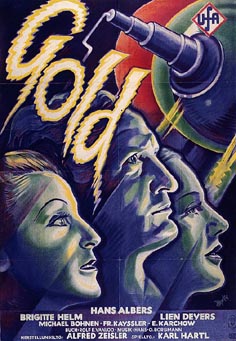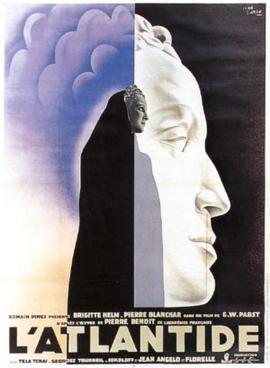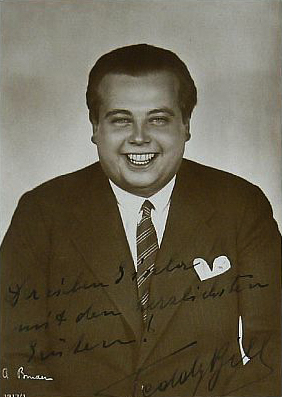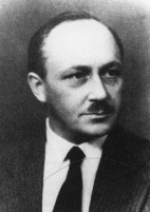
Gustaf Gründgens, born Gustav Heinrich Arnold Gründgens, was one of Germany's most famous and influential actors of the 20th century, and artistic director of theatres in Berlin, Düsseldorf, and Hamburg. His career continued unimpeded through the years of the Nazi regime; the extent to which this can be considered as deliberate collaboration with the Nazis is hotly disputed.

Hans Philipp August Albers was a German actor and singer. He was the biggest male movie star in Germany between 1930 and 1960 and one of the most popular German actors of the twentieth century.

The Testament of Dr. Mabuse, also called The Last Will of Dr. Mabuse, is a 1933 German crime-thriller film directed by Fritz Lang. The movie is a sequel to Lang's silent film Dr. Mabuse the Gambler (1922) and features many cast and crew members from Lang's previous films. Dr. Mabuse is in an insane asylum where he is found frantically writing his crime plans. When Mabuse's criminal plans begin to be implemented, Inspector Lohmann tries to find the solution with clues from gangster Thomas Kent, the institutionalized Hofmeister and Professor Baum who becomes obsessed with Dr. Mabuse.
Curt Siodmak was a German-American novelist, screenwriter and director. He is known for his work in the horror and science fiction film genres, with such films as The Wolf Man and Donovan's Brain. He was the younger brother of noir director Robert Siodmak.

Sybille Maria Christina Schmitz was a German actress.

Francis Loftus Sullivan was an English film and stage actor.

Erik Ode was a German director and actor who was most famous for playing Kommissar Herbert Keller in the German television drama Der Kommissar. He married actress Hilde Volk in 1942. Many years later they co-starred together in the TV series Sun, Wine and Hard Nuts.

Karl Hartl was an Austrian film director.

Gold is a 1934 German science fiction film directed by Karl Hartl. The film involves a British scientist who is attempting to create a device that turns base materials into gold. He later forces the German scientist's assistant Werner Holk, who was working on a similar experiment, to come to his underwater nuclear reactor to help him. Gold was made in both German-language and French-language versions with Brigitte Helm reprising her role in both.
Star-Crossed Lovers is a 1962 East German romantic war drama film directed by Frank Beyer.

L'Atlantide is a 1932 German-French adventure and fantasy film directed by G. W. Pabst and starring Brigitte Helm. It is based on the novel L'Atlantide by Pierre Benoît.
Max Colpet was an American writer, scriptwriter and lyricist of Russian-German descent.
Werner Schott was a German actor.

Teddy Bill was an Austrian actor. Later in his career he was also credited as Teddy Kern.

Erich Karl Heinrich Kettelhut was a German production designer, art director and set decorator. Kettelhut is considered one of the most important artists in the history of early German cinema, mainly for his set direction for Die Nibelungen (1924) and his design and visual effects for Metropolis (1927). His early career was defined by a working relationship with fellow designers Otto Hunte and Karl Vollbrecht, the trio working on many of Fritz Lang's early German films. Despite being best known for his iconic visuals on several of the most important films of German Expressionist cinema, he is also noted for a career spanning into the 1960s and his work on more light-hearted films and musicals.

I by Day, You by Night is a 1932 German musical comedy film directed by Ludwig Berger and starring Käthe von Nagy and Willy Fritsch. It was shot at the Babelsberg Studios and on location at the Sanssouci Palace in Potsdam. The film's sets were designed by the art director Otto Hunte. It premiered in Berlin on 29 November 1932.
Julia is a 1974 erotic drama film from West Germany starring Sylvia Kristel.
Hermann Speelmans was a German stage and film actor.
Marc Sorkin or Mark Sorkin (1902–1986) was a Russian-born film editor and director. He worked with Georg Wilhelm Pabst on a number of films as editor or assistant director.












